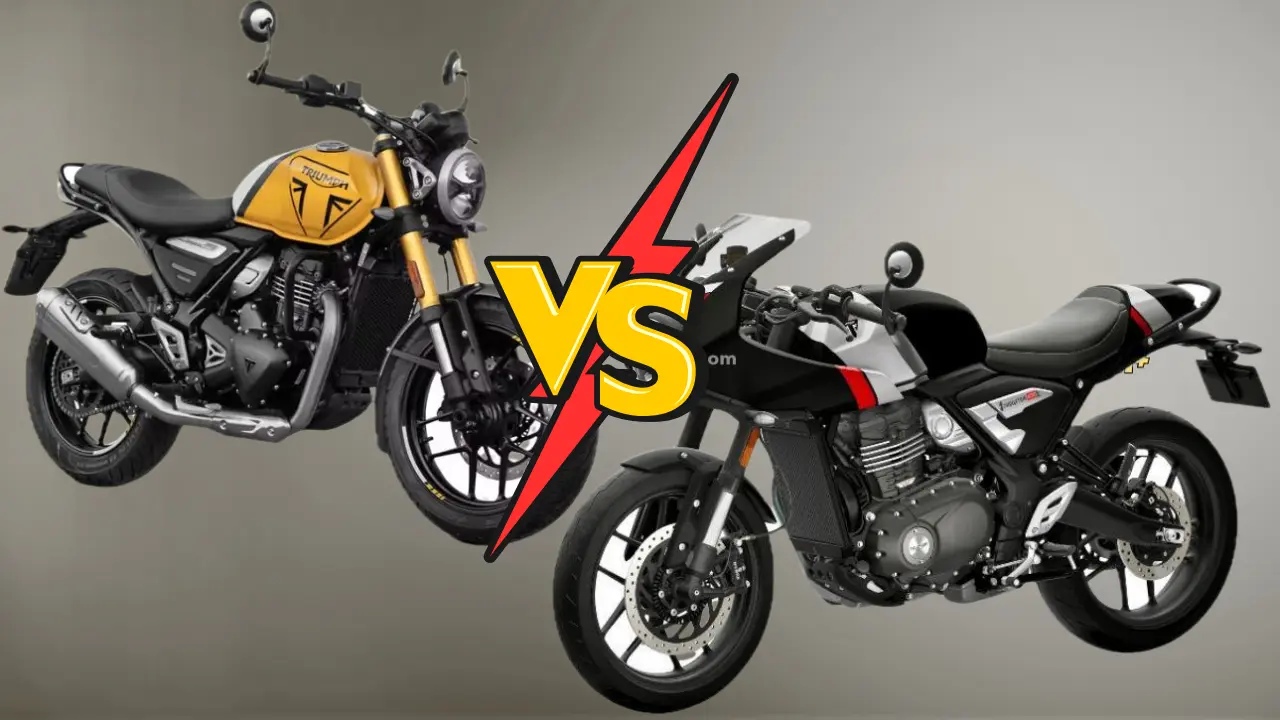Triumph introduces the Thruxton 400, a café racer sibling to the popular Speed 400 roadster. While both motorcycles share the same potent 398cc liquid-cooled single-cylinder engine, key differences in design, performance, and ergonomics set them apart for distinct riding experiences. The Thruxton 400 arrives with a higher power output and a clear focus on classic racing style.
The introduction of the Thruxton 400 expands Triumph’s successful 400cc platform, offering a stylish alternative to the Speed 400. Here’s a breakdown of the five major distinctions that define these two models.
1. Design and Styling
The most apparent difference lies in their design philosophy. The Triumph Speed 400 is a modern roadster with an upright, neutral riding posture, designed for versatility and comfort. In contrast, the Triumph Thruxton 400 is a dedicated café racer, featuring a more aggressive and forward-leaning stance.
This classic café racer aesthetic is achieved through several key elements:
- Clip-on Handlebars: The Thruxton 400 is equipped with clip-on handlebars that are lower and more angled, encouraging a sporty riding position.
- Fairing: A signature small front fairing, often called a bikini fairing, adds to its retro racing look.
- Seat and Cowl: It features a distinct seat that comes with a removable rear seat cowl, enhancing its single-seater appearance.
2. Ergonomics and Rider Comfort
The design directly impacts the ergonomics. The Speed 400’s one-piece handlebar and mid-set footpegs create a comfortable, upright triangle for the rider, suitable for daily commuting and longer journeys.
The Thruxton 400, however, prioritizes a sporty feel. Its clip-on handlebars and slightly more rear-set footpegs result in a more committed riding posture. The seat height is also slightly different, with the Thruxton at 795mm and the Speed 400 at 790mm. The Thruxton is also the heavier of the two, weighing in at 183 kg compared to the Speed 400’s 176 kg.
3. Engine Tune and Performance
While both bikes are powered by the same 398.15cc, liquid-cooled, DOHC, single-cylinder engine, Triumph has tuned them differently. The Thruxton 400’s engine produces more power, making it the more performance-oriented model.
- Triumph Thruxton 400: 42 PS (or 41.4 bhp) @ 9,000 rpm.
- Triumph Speed 400: 40 PS (or 39.5 bhp) @ 8,000 rpm.
Both models deliver the same peak torque of 37.5 Nm, but at different rpms: 7,500 rpm for the Thruxton 400 and 6,500 rpm for the Speed 400. This gives the Thruxton a more aggressive power delivery at higher revs.
4. Dimensions
Subtle dimensional changes contribute to the different handling characteristics of each bike. The Thruxton 400 is narrower at 775mm compared to the Speed 400’s 814mm width. However, it is taller at 1110mm, while the Speed 400 stands at 1084mm. The Speed 400 offers slightly more ground clearance at 165mm versus the Thruxton’s 158mm.
5. Equipment and Features
Both motorcycles share a high level of standard equipment, including a slip-and-assist clutch, ride-by-wire throttle, traction control, and dual-channel ABS. However, the Thruxton 400 includes a few premium touches that align with its café racer persona.
The Thruxton 400 comes with an adjustable windscreen and DRLs (Daytime Running Lights). It also features a USB charging port, a feature not standard on the Speed 400.
Read Also: Kawasaki Unveils 2026 Ninja ZX-6R and 650 with Fresh Colour Updates
